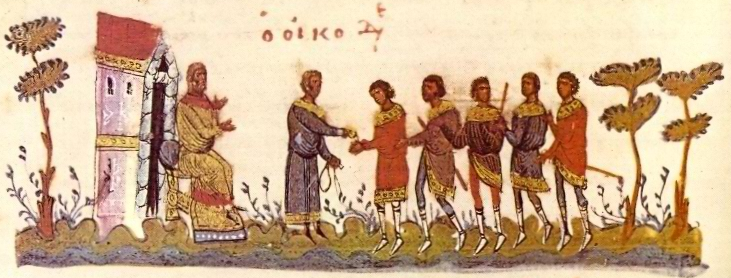This article originally appeared as a sidebar to Jakob Josef Petuchowski’s article entitled, “The Theological Significance of the Parable in Rabbinic Literature and the New Testament.”
Detuchowski’s article is an important step in the progress of scholarship. Even the best recent books dealing with the parables have neglected the fact that Jesus’ parables are not as unique as they seem to be. They are part and parcel of rabbinic tradition. This simple truth has been forgotten because a German scholar, Jülicher, decided that there is practically no connection between Jesus’ and the rabbinic parables; Jülicher even thought that the other Jews were influenced by him.
Until now, dissident scholars have tried to find concrete sources for Jesus’ parables: they pick out this or that rabbinic parable to show that Jesus had known it and had transformed it in his own way. But the correct approach would be to use the method of the Russian formalists and study the form of the Jewish parable itself, its motifs and literary functions. Most motifs are common to the parables of the rabbis and of Jesus. Two themes are dominant: workers (or slaves), their labour and compensation, and the banquet and the invited guests, but even the image of the net appears in a parable of Jesus and a saying of Rabbi Akiba. A master of this kind of oral literature can, with the help of these motifs, describe an interesting, often paradoxical, situation, which, at the same time, evokes a realistic impression. Occasionally, the situation is so striking that others like to use the new creation, but even so, strictly speaking, they do not repeat a specific parable, but rather change its components, combining them with other popular themes. This happened, for instance, in Jesus’ famous parable of the Sower. The archetype, so to say, appears in Mishna Avoth (Ethics of the Fathers) 5:15: “There are four types of students: Quick to learn and quick to forget…slow to learn and slow to forget…quick to learn and slow to forget and slow to learn and quick to forget…” Jesus worked out this scheme in an “impressionistic” way and applied it to four kinds of soil. That types of disciples, or spiritual rabbis, were compared with various objects is also known from rabbinic literature, take again Mishna Avoth 5:18. Let me cite an example of a rabbinic parable: “This world resembles a householder who hired workers and inspected them to see who really worked…both for those who really worked and for those who did not really work, all was prepared for a banquet” (Seder Eliahu Rabba, ed. Isch Schalom, p. 5). Here, the theme of workers and their work and the banquet motif are dovetailed. Even the paradox of this parable resembles the way of Jesus: both the good and the bad workers are invited to the banquet. The parable is used in an eschatological sense, for the banquet motif is very apt for that purpose: the Gentiles will not partake of the banquet but be condemned to Gehenna, because they speak against the Children of Israel. But the simile itself could also be used for many other purposes and here it is not very well adapted to its aim.
A good parabolist, evidently, had not only to produce tension within the simile itself, but also to forge a dialectical link between the simile and its application. When one does not clarify one’s parable, the simile only offers hints of the object of the teaching, and even then not unequivocally. A parable may explain the meaning of human life, the eschatological expectation, the proper and false behaviour of Man towards God, the study of Torah, Israel’s election. It may even be used, as in later rabbinic literature, to elucidate biblical narratives or individual verses.
The parable itself, then, unilluminated, is really difficult to understand, and there may often be more than one possible meaning. Jesus was right to stress the point that a parable is harder of comprehension than a plain teaching. The study of his parables in connection with rabbinic ones will surely throw light on the development of this genre in rabbinic literature and its typology.


![David Flusser [1917-2000]](https://www.jerusalemperspective.com/wp-content/uploads/userphoto/21.jpg)




























































































